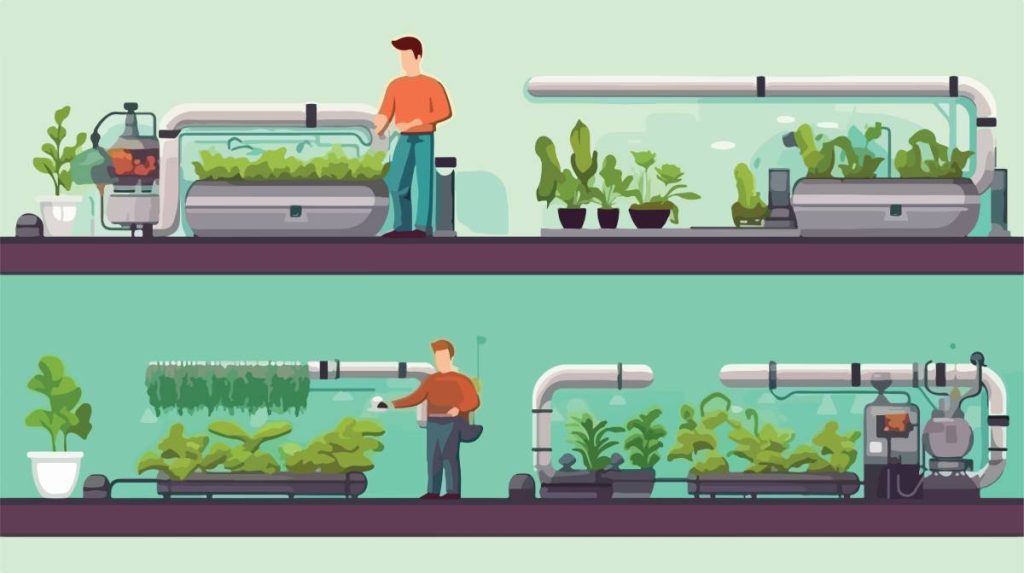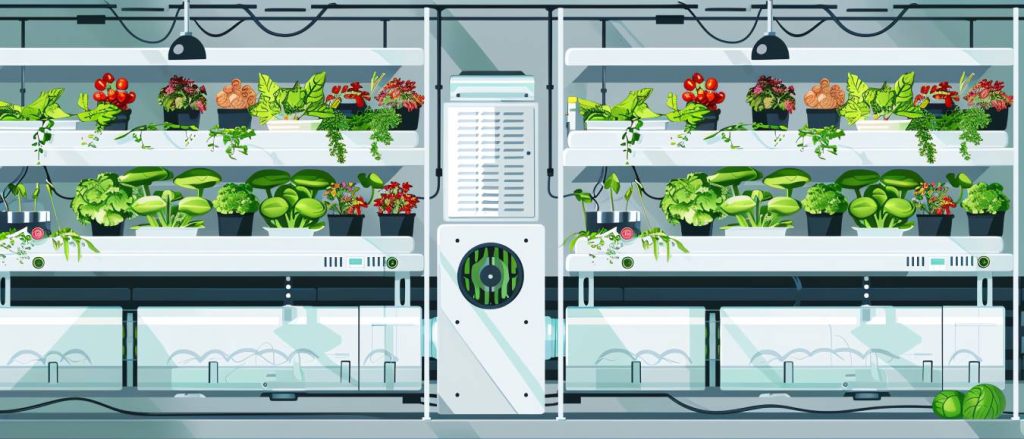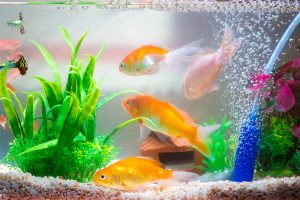Hydroponic gardening is a method of growing plants without soil, using nutrient-rich water to deliver essential nutrients directly to the plant roots. This innovative approach enables gardeners to cultivate a wide variety of plants in environments where traditional soil-based gardening might be challenging or impossible. By optimizing growing conditions, hydroponic systems can lead to faster plant growth and higher yields.
Benefits of Hydroponic Gardening
The benefits of hydroponic gardening are numerous and compelling. Since plants receive nutrients more efficiently, they often grow faster and produce larger harvests compared to traditional methods. Additionally, hydroponic systems use less water, making them an environmentally friendly option. These systems also eliminate the need for soil, reducing the risk of soil-borne diseases and pests.
Lastly, hydroponic gardening can be done indoors or in small spaces, making it accessible to urban dwellers and those with limited outdoor areas.
Who Can Benefit from This Method
Hydroponic gardening can benefit a wide range of individuals and groups. Urban residents with limited outdoor space can grow fresh produce year-round in their apartments. Schools can use hydroponic systems to teach students about plant biology and sustainable agriculture.
Restaurants and chefs can grow their own herbs and vegetables, ensuring the freshest ingredients for their dishes.
Even traditional gardeners looking to diversify their growing methods will find value in hydroponics, as it offers a versatile and efficient alternative to soil-based gardening.
What is Hydroponic Gardening?
Definition of Hydroponic Gardening
Hydroponic gardening is a method of cultivating plants using nutrient-rich water instead of soil. This technique leverages water-soluble mineral nutrients to feed plants directly through their roots, allowing for more controlled and efficient growth. By optimizing the delivery of nutrients, hydroponic systems can support a variety of plants, from leafy greens and herbs to fruits and flowers.

Comparison with Traditional Soil Gardening
Traditional soil gardening relies on soil to supply plants with nutrients, water, and a stable growth medium. While soil contains organic matter and minerals essential for plant growth, it can also harbor pests, diseases, and weeds that may interfere with healthy plant development.
In contrast, hydroponic gardening eliminates the use of soil, reducing the risk of soil-borne complications and allowing for precise control over nutrient delivery.
Additionally, hydroponic systems typically use less water and space, making them suitable for urban agriculture and indoor gardening.
Basic Principles and Concepts
The basic principles of hydroponic gardening revolve around ensuring that plants receive the essential elements they need for growth in a controlled environment. Key concepts include:
- Nutrient Solutions: A hydroponic system uses a specially formulated nutrient solution that provides plants with essential minerals and elements. This solution is typically made by dissolving commercial or homemade nutrient mixes into water.
- Growing Mediums: Instead of soil, hydroponic systems use inert growing mediums like perlite, rock wool, or coconut coir to support plant roots and facilitate oxygenation.
- Water and Oxygen: A critical aspect of hydroponic gardening is maintaining a balanced supply of water and oxygen to the plant roots. Systems like Deep Water Culture (DWC) or Nutrient Film Technique (NFT) continuously circulate oxygenated nutrient solutions to meet plant needs.
- Light and Environment Control: Since hydroponic systems can be used indoors or in controlled environments, managing light, temperature, and humidity is essential to mimic natural conditions and promote optimal plant growth.
By understanding and implementing these core principles, hydroponic gardeners can achieve robust and healthy plant development, often surpassing the efficiency and output of traditional soil gardening.
Essential Equipment for Hydroponic Gardening
Setting up a successful hydroponic garden requires a few essential pieces of equipment that ensure your plants receive the right conditions for optimal growth. Here are the key items you’ll need:
Grow Lights
Grow lights are crucial for indoor hydroponic gardens as they provide the necessary light spectrum to support plant photosynthesis. There are various types of grow lights to consider, including:
- LED Grow Lights: Energy-efficient and long-lasting, they produce minimal heat and can be customized to provide specific light wavelengths.
- Fluorescent Grow Lights: Affordable and good for starting seedlings and growing leafy greens, though they might not be strong enough for fruiting plants.
- High-Intensity Discharge (HID) Lights: Very effective for large-scale setups but produce significant heat and require proper ventilation.

Nutrient Solutions
Nutrient solutions are the lifeblood of a hydroponic system, delivering essential minerals and nutrients directly to the plants. These solutions can be purchased pre-mixed or made at home using commercial nutrient mixes. It’s important to follow the recommended dosages and ratios for different plants to ensure balanced nutrient delivery.
Growing Mediums
While hydroponic systems don’t use soil, they often rely on inert growing mediums to provide support and oxygen to plant roots. Popular options include:
- Perlite: Lightweight and well-aerated, ideal for systems requiring high drainage.
- Coconut Coir: Retains moisture well and is eco-friendly.
- Rockwool: Has excellent water retention and aeration but requires pH adjustment before use.
Water Pumps and Irrigation Systems
Efficient water circulation is key to keeping nutrient solutions well-oxygenated and available to plants. Water pumps and irrigation systems play an important role in this process:
- Submersible Pumps: Used in systems like Deep Water Culture (DWC) and Nutrient Film Technique (NFT) to circulate water.
- Drip Irrigation Systems: Deliver nutrient solutions directly to the root zone in measured amounts, great for precision watering.
pH and EC Meters
Maintaining the correct pH and electrical conductivity (EC) levels in your nutrient solution is crucial for plant health and nutrient uptake:
- pH Meters: Ensure the acidity or alkalinity of the nutrient solution remains within the optimal range for your plants, generally between 5.5 and 6.5.
- EC Meters: Measure the concentration of nutrients in the solution, helping you monitor and adjust nutrient levels to avoid under- or over-fertilization.
By equipping your hydroponic garden with these essential tools, you’ll create a nurturing environment that maximizes plant growth and productivity.
Setting Up Your Hydroponic System
Choosing the Right Location
Selecting an appropriate location for your hydroponic system is crucial for its success. Ideally, you should choose a site that offers adequate space, access to power and water supplies, and the ability to control environmental factors like light, temperature, and humidity.
For indoor setups, basements, spare rooms, or dedicated grow tents can provide optimal conditions, while shaded outdoor areas may also work if you plan to utilize natural sunlight.
Ensure the location has good air circulation to prevent mold and pests and that it is easily accessible for routine maintenance and monitoring.
Different Types of Hydroponic Systems
Hydroponic gardening can employ various system designs, each with its unique advantages and suitability for different types of plants:
- Nutrient Film Technique (NFT): This system uses a continuous flow of nutrient-rich water along a sloped channel where the plant roots dangle. It is ideal for growing small, fast-growing plants like lettuce and herbs.
- Deep Water Culture (DWC): Plants are suspended in a nutrient solution with their roots fully submerged in oxygenated water. DWC systems are straightforward and perfect for beginners, great for growing large plants like tomatoes and peppers.
- Ebb and Flow (Flood and Drain): This system floods the plant roots with a nutrient solution before draining them back into a reservoir. The intermittent exposure to air helps roots absorb oxygen efficiently, making it suitable for a variety of crops.
- Drip System: The nutrient solution is fed directly to the plant roots through small drip emitters. The excess is collected back into a reservoir, making this method highly efficient and versatile for different plant types.
- Aeroponics: The roots are suspended in the air and misted with nutrient solution, allowing for maximum oxygenation. Aeroponics is highly efficient but requires more precise control.
Step-by-Step Setup Process
- Plan Your System: Determine which hydroponic system suits your needs, the types of plants you wish to grow, and the available space.
- Gather Equipment: Collect all necessary equipment, including reservoirs, grow lights, pumps, growing mediums, and nutrient solutions.
- Construct the Structure: Assemble the basic framework of your chosen hydroponic system. This may include building channels for NFT systems or containers for DWC.
- Install Grow Lights: Position and install grow lights to ensure they cover the entire growing area. Adjust the height and intensity according to plant needs.
- Set Up Irrigation: Install water pumps and irrigation systems to ensure efficient circulation and delivery of nutrient solutions.
- Prepare Nutrient Solution: Mix and measure the nutrient solution according to the specific requirements of your plants. Use pH and EC meters to adjust levels.
- Plant Seedlings: Place seedlings or young plants into the growing medium. Make sure the roots are properly positioned to receive nutrients and oxygen.
- Monitor and Adjust: Regularly check the system for any signs of nutrient deficiencies, pH imbalances, or equipment malfunctions. Adjust as needed to maintain optimal conditions.
- Maintain and Clean: Keep your system clean to prevent disease and algae buildup. Regular maintenance, such as changing nutrient solutions and cleaning equipment, will promote the health and productivity of your hydroponic garden.
By following these steps and understanding the essential elements of your hydroponic system, you can create a thriving environment tailored to your plant’s needs.
Selecting the Right Plants
Choosing the right plants for your hydroponic system is essential to ensure a successful growing experience. Different plants have varying requirements, and some thrive better in hydroponic environments than others. Here are some considerations and recommendations to help you get started:
Best Plants for Beginners
For those new to hydroponics, selecting plants that are easy to grow and manage can make the learning curve much smoother. Some of the best options for beginners include:
- Lettuce: Quick-growing and requiring minimal maintenance, lettuce is perfect for hydroponic systems.
- Herbs: Basil, mint, and cilantro are well-suited for hydroponics and add fresh flavors to your kitchen.
- Spinach: Spinach grows rapidly and is nutritionally dense, making it an excellent choice for beginners.
- Kale: Another leafy green that is easy to grow and highly nutritious, ideal for starters.
Popular Plants to Grow Hydroponically
Once you’ve gained confidence and experience, you can expand your hydroponic garden to include a variety of popular and slightly more challenging plants:
- Tomatoes: Require more attention but offer a rewarding harvest due to their flavorful fruits.
- Peppers: Both bell and chili peppers do well in hydroponic systems with proper care and nutrient management.
- Cucumbers: Fast-growing and productive, cucumbers thrive in hydroponic environments.
- Strawberries: A bit more demanding but worth the effort for their delicious fruit.
- Herb Varieties: Expanding your herb repertoire to include parsley, oregano, and rosemary can diversify your garden.
Tips for Selecting Seeds and Seedlings
Selecting high-quality seeds and seedlings is crucial for the health and productivity of your hydroponic garden. Here are some tips to ensure you start on the right foot:
- Choose Reliable Suppliers: Purchase seeds from reputable suppliers to ensure quality and viability.
- Check Germination Rates: Opt for seeds with high germination rates to maximize your chances of successful plant growth.
- Select Hydroponic-Compatible Varieties: Some plant varieties are specifically bred for hydroponic cultivation. Research and choose these for better results.
- Inspect Seedlings for Health: When buying seedlings, check for vibrant leaves and a robust root system. Avoid those with signs of disease or pests.
- Start with Healthy Seeds: Look for seeds that are disease-resistant and suited for your hydroponic system.
By carefully selecting the right plants, seeds, and seedlings, you can maximize the success and enjoyment of your hydroponic gardening journey.
Managing Nutrient Solutions
Successfully managing nutrient solutions is fundamental for a thriving hydroponic garden. Understanding the nutrient requirements of your plants, knowing how to mix and maintain these solutions, and monitoring pH and electrical conductivity (EC) are critical aspects. Additionally, recognizing and addressing common nutrient deficiencies can prevent potential issues and ensure healthy plant growth.
Understanding Nutrient Requirements
Plants need a variety of essential nutrients to grow and flourish. These nutrients are typically divided into two categories: macronutrients and micronutrients. Macronutrients, such as nitrogen (N), phosphorus (P), and potassium (K), are required in larger amounts. Micronutrients, including iron (Fe), manganese (Mn), and zinc (Zn), are needed in smaller quantities but are just as vital for plant health.
How to Mix and Maintain Nutrient Solutions
- Gather Materials: You will need nutrient concentrates, water, a mixing container, measuring tools, and pH and EC meters.
- Mixing the Solution: Follow the instructions on your nutrient concentrate packaging. Typically, you dilute the concentrate with water to achieve the desired concentration.
- Measuring pH and EC: Use pH and EC meters to measure the solution. The ideal pH range for most plants is between 5.5 and 6.5. Adjust the pH using pH up or down solutions.
- Maintaining the Solution: Regularly monitor and adjust the nutrient solution to maintain appropriate levels. Add water or additional nutrients as necessary to balance concentration and volume.
Importance of pH and Electrical Conductivity (EC)
- pH: The pH level affects nutrient availability to the plants. If the pH is too high or too low, certain nutrients become unavailable, leading to deficiencies.
- EC: Electrical conductivity measures the nutrient concentration in the solution. Ensuring proper EC levels helps maintain an optimal nutrient balance. Too high EC can cause nutrient burn, while too low can lead to deficiencies.
Common Nutrient Deficiencies and How to Fix Them
- Nitrogen Deficiency: Indicated by yellowing leaves, particularly the older ones. Fix this by adding a nitrogen-rich nutrient solution.
- Phosphorus Deficiency: Symptoms include dark green or purplish leaves and poor root development. Increase phosphorus levels in the nutrient mix to rectify this.
- Potassium Deficiency: Manifested by yellowing leaf edges and spots. Add a potassium supplement to your nutrient solution.
- Iron Deficiency: Results in yellowing between the leaf veins of new growth. Correct by using iron chelate supplements.
- Magnesium Deficiency: Causes yellowing between the veins of older leaves. Use a magnesium supplement, such as Epsom salts, in your solution.
By regularly monitoring and adjusting your nutrient solutions, you can prevent and correct deficiencies, ensuring robust plant health and maximizing growth and yield.
Light and Temperature Considerations
Providing the right light and temperature conditions is essential for the success of your hydroponic garden. These factors directly influence plant growth, health, and productivity.
Importance of Light for Plant Growth
Light is a critical component of photosynthesis, the process by which plants convert light energy into chemical energy to fuel their growth. Insufficient light can lead to weak, leggy plants with poor yields, while the right amount of light promotes strong, healthy growth and maximizes your plants’ potential.
Types of Grow Lights and Their Uses
Choosing the appropriate grow lights for your hydroponic setup is important for meeting your plants’ light requirements:
- Fluorescent Lights: Ideal for seedlings and young plants, providing sufficient light without excessive heat.
- LED Grow Lights: Energy-efficient and versatile, these lights can be tailored to emit specific wavelengths that optimize photosynthesis, suitable for all growth stages.
- High-Intensity Discharge (HID) Lights: Including Metal Halide (MH) and High-Pressure Sodium (HPS), HID lights are powerful options for high-light-requiring plants such as tomatoes and peppers.
- Compact Fluorescent Lights (CFL): Provides a balanced light spectrum perfect for smaller setups and budget-friendly options.
Ideal Temperature Ranges for Different Plants
Maintaining optimal temperature ranges is crucial for plant metabolic processes. Different plants have unique temperature preferences, but a general guideline is:
- Leafy Greens (Spinach, Lettuce, Kale): 60°F to 70°F (15°C to 21°C)
- Fruiting Plants (Tomatoes, Peppers, Cucumbers): 70°F to 85°F (21°C to 29°C)
- Herbs (Basil, Parsley): 65°F to 75°F (18°C to 24°C)
Tips for Managing Light and Temperature
- Monitor and Adjust: Regularly check the temperature and light intensity in your grow area using thermometers and light meters. Adjust as needed.
- Use Timers: Automate light cycles with timers to ensure plants receive the right amount of light each day (typically 12-16 hours for most plants).
- Ventilation: Enhance airflow with fans to maintain consistent temperatures and prevent overheating, especially when using high-intensity lights.
- Reflective Surfaces: Maximize light efficiency with reflective surfaces, such as mylar or white walls, to ensure even light distribution.
- Temperature Control: Invest in heating or cooling solutions such as heaters, air conditioners, or cooling fans to maintain stable temperatures within your growing environment.
By carefully managing light and temperature, you can create an optimal environment for your hydroponic garden, leading to healthier plants and greater yields.
Common Challenges and How to Overcome Them
Identifying and Solving Common Issues
Growing a hydroponic garden can be incredibly rewarding, but it also comes with its own set of challenges. Here are some of the most common issues and how to address them:
- Root Rot: This fungal disease is usually due to overwatering or poor oxygenation of the root zone. Signs include brown, mushy roots, and wilting plants. To combat root rot, ensure proper aeration of the water by using air stones, and avoid stagnant water. Additionally, using beneficial bacteria products can help keep root pathogens at bay.
- Pests: Hydroponic systems are not immune to pests like aphids, spider mites, and whiteflies. Regularly inspect plants for signs of pest activity. Natural predators such as ladybugs can be introduced to control pest populations, or organic insecticidal soaps can be used as needed.
- Nutrient Imbalances: Symptoms such as leaf discoloration, stunted growth, and poor yields can indicate a nutrient imbalance. Regular monitoring of pH and EC levels helps prevent these issues. If detected, adjust nutrient levels according to plant requirements.
Preventative Measures for a Healthy Garden
Preventative measures are crucial for maintaining a healthy hydroponic garden and avoiding common problems:
- Sanitation: Keep your growing environment clean. Sterilize equipment regularly to prevent the spread of diseases.
- Water Quality: Use clean, filtered water to avoid introducing contaminants into your nutrient solution.
- Beneficial Organisms: Incorporate beneficial microbes and fungi to help suppress harmful pathogens naturally.
- Routine Inspections: Conduct frequent check-ups on your plants, roots, and systems to catch and address any issues early.
Troubleshooting Tips
Even with the best preventative measures, issues can still arise. Here are some quick troubleshooting tips:
- Wilting Plants: Check for root diseases, inadequate watering, or excessive heat. Adjust environmental conditions accordingly.
- Yellowing Leaves: Investigate potential nutrient deficiencies, pH imbalances, or pest infestations. Correct by adjusting nutrient formulations or pH levels.
- Slow Growth: Ensure sufficient light exposure and proper nutrient levels. Consider the possibility of overcrowded roots and adjust spacing if needed.
By addressing these common challenges proactively and maintaining vigilant care, you can foster a thriving hydroponic garden with healthy, productive plants.
Harvesting and Maintenance
Best Practices for Harvesting Hydroponic Plants
Proper harvesting techniques are vital to maximizing yield and ensuring the continued health of your plants. Here are some best practices to follow:
- Timing: Harvest plants at their peak ripeness. For leafy greens, this typically means when they are fully grown but tender. For fruiting plants, harvest fruits when they have fully matured in size and color.
- Tools: Use clean, sharp scissors or pruning shears to make precise cuts, which helps to minimize damage to the plant.
- Method: Harvest just above the node (joint where leaves and stems develop) to encourage new growth. Always remove any yellowing or dead leaves to promote the plant’s overall health.
- Frequency: Regular harvesting encourages continuous production. For instance, herbs and leafy greens grow back quickly when harvested correctly.
Ongoing Maintenance and Care
Proper maintenance is essential to the success of your hydroponic garden. Regularly performed tasks will ensure your plants remain healthy and your system continues to operate efficiently.
- Check Nutrient Levels: Regularly monitor your nutrient solution, adjusting the formulation as your plants grow and their nutrient needs change.
- Water Quality: Maintain clean water by regularly topping up with fresh, filtered water. Change the nutrient solution entirely every 1-2 weeks to prevent nutrient lockout and reduce the risk of disease.
- pH Levels: Keep the pH levels stable (typically between 5.5 and 6.5 for most plants) by using pH test kits and adjusting as necessary with pH up or down solutions.
- Inspect Plants: Conduct routine inspections for signs of pests, diseases, or nutrient deficiencies. Early detection allows for quicker interventions.
- Maintain Equipment: Regularly check and clean pumps, air stones, and other equipment to maintain optimal functioning.
How to Clean and Sterilize Your Hydroponic System
Keeping your hydroponic system clean and sterilized is crucial to prevent the build-up of pathogens and ensure the longevity of your garden.
- System Flushing: Regularly flush the system with clean water between crop cycles to remove nutrient residues.
- Disassemble Components: Periodically disassemble the system to thoroughly clean and inspect all parts.
- Sterilizing Solution: Use a diluted bleach solution (1 part bleach to 9 parts water) or hydrogen peroxide to sterilize components such as reservoirs, trays, and tubing. Rinse thoroughly to remove any residue.
- Cleaning Tools: Use brushes and cloths to scrub away any algae, salts, or other build-ups from surfaces and equipment.
- Reassembly: Once all parts are clean and dry, reassemble the system and fill it with fresh water and nutrients, checking for any leaks or issues.
By adhering to these harvesting and maintenance best practices, you can maintain a robust and productive hydroponic garden. Regular care and cleanliness are key to ensuring a thriving, healthy environment for your plants.
Conclusion
To sum up, maintaining a healthy and productive hydroponic garden involves a combination of preventative measures, vigilant monitoring, and regular maintenance. Key points to remember include:
- Preventative Measures: Ensure proper sanitation, use clean water, incorporate beneficial organisms, and conduct routine inspections to prevent problems before they start.
- Troubleshooting Tips: Address common issues proactively by checking for root diseases, adjusting nutrient and pH levels, and ensuring adequate light and spacing.
- Harvesting Practices: Harvest at the right time, use clean tools, and follow appropriate techniques to encourage new growth and maximize yield.
- Ongoing Maintenance: Regularly check nutrient and pH levels, maintain water quality, inspect plants for pests and diseases, and keep all equipment functioning optimally.
- System Cleaning: Regularly clean and sterilize your hydroponic system to prevent pathogen build-up and ensure the longevity of your garden.
Embarking on your hydroponic gardening journey can be incredibly rewarding. With the right knowledge and a bit of dedication, you’ll be able to grow healthy, vibrant plants all year round. Don’t be discouraged by initial challenges—each step you take brings you closer to mastering the art of hydroponics.
Resources for Further Learning and Support
To support your hydroponic gardening endeavors, here are some resources for further learning and community support:
Books
- “Hydroponic Food Production” by Howard M. Resh is a comprehensive guide that covers all aspects of hydroponics.
- “The Hydroponic Bible“ by Chris Kovach: This book is an excellent resource for both beginners and advanced hydroponic gardeners, offering practical advice and scientifically backed methods.
- “DIY Hydroponic Gardens“ by Tyler Baras: A step-by-step guide to building your own hydroponic systems with accessible projects tailored for various skill levels.
Websites
- Check out sites like Modern Farmer (modernfarmer.com) for articles, tips, and tutorials.
- University of Arizona Controlled Environment Agriculture Center (cals.arizona.edu): Provides research-based information and resources on hydroponic and indoor plant production.
- Forums and Communities: Join online forums such as Helpful Gardener (helpfulgardener.com) and Reddit’s r/hydroponics for advice, shared experiences, and community support.
By leveraging these resources and dedicating time to your garden, you’ll soon enjoy the fresh, home-grown produce that comes with hydroponic gardening. Happy growing!
Local Hydroponic Gardening Clubs and Workshops
- Local Gardening Clubs:
- Many communities have gardening clubs that include hydroponic enthusiasts. Check with your local horticultural society or botanic gardens to find out if there is a group near you.
- Workshops and Classes:
- Adult Education Centers: Many adult education centers offer hydroponic gardening classes, which can range from single-day workshops to semester-long courses.
- Extension Services: University extension services often host workshops and events focused on hydroponic and controlled-environment agriculture. These events are typically led by experts and provide in-depth, hands-on learning experiences.
These resources, communities, and local opportunities will support and enhance your hydroponic gardening skills. Engaging with these tools will help you continue learning and growing in your hydroponic journey. Happy gardening!
Frequently Asked Questions (FAQs) about Hydroponic Gardening
1. What is hydroponic gardening?
Hydroponic gardening is a method of growing plants without soil, using mineral nutrient solutions in a water solvent. This technique allows plants to grow more efficiently and can be done in various environments, including indoors.
2. What are the benefits of hydroponic gardening?
The benefits include faster plant growth, higher yields, reduced water usage, and the ability to grow plants in areas with poor soil quality. Additionally, it often requires less space compared to traditional gardening.
3. What types of plants can be grown hydroponically?
Most plants can be grown hydroponically, including vegetables, herbs, fruits, and ornamental plants. Common examples include lettuce, tomatoes, cucumbers, basil, strawberries, and roses.
4. What equipment do I need to start a hydroponic garden?
Basic equipment includes a growing container, nutrient solution, a water reservoir, air pump and air stones for oxygenation, a growing medium, and a light source if growing indoors. Various systems like drip systems, NFT (Nutrient Film Technique), and aeroponics can be used depending on your needs.
5. How do I mix and manage nutrient solutions?
Nutrient solutions are made by dissolving specific nutrients designed for hydroponics in water. They must be carefully measured and mixed, and it’s essential to monitor and adjust pH levels to ensure optimal plant growth. Many pre-mixed nutrient solutions are available for beginners.
6. How often should I check nutrient levels and pH?
Nutrient levels and pH should be checked regularly, ideally daily or at least a few times a week. Maintaining the proper balance is crucial for plant health and growth.
7. What is the best lighting for hydroponic plants?
The best lighting depends on the type of plants and the growth stage. LED grow lights, which offer a full spectrum of light, are popular for their efficiency and low heat output. Other options include fluorescent lights and high-intensity discharge (HID) lights.
8. How can I prevent pests and diseases in a hydroponic system?
Maintaining cleanliness, using proper filtration, and ensuring adequate air circulation can help prevent pests and diseases. Regularly inspect plants for signs of trouble and consider introducing beneficial insects or organic treatments if necessary.
9. Can I build my own hydroponic system?
Yes, many hydroponic gardeners build their own systems. DIY hydroponic setups can range from simple designs using recycled materials to more complex systems. Numerous guides and resources are available to help you get started.
10. Is hydroponic gardening cost-effective?
Initial setup can be costly, but hydroponic gardening can save money in the long run by reducing water and fertilizer use, increasing plant growth rates, and producing higher yields. Many find the investment worthwhile for the benefits and efficiencies gained.
These FAQs should provide a helpful starting point for anyone interested in hydroponic gardening. If you have more specific questions, be sure to consult the resources and communities mentioned earlier in this document. Happy growing!





















